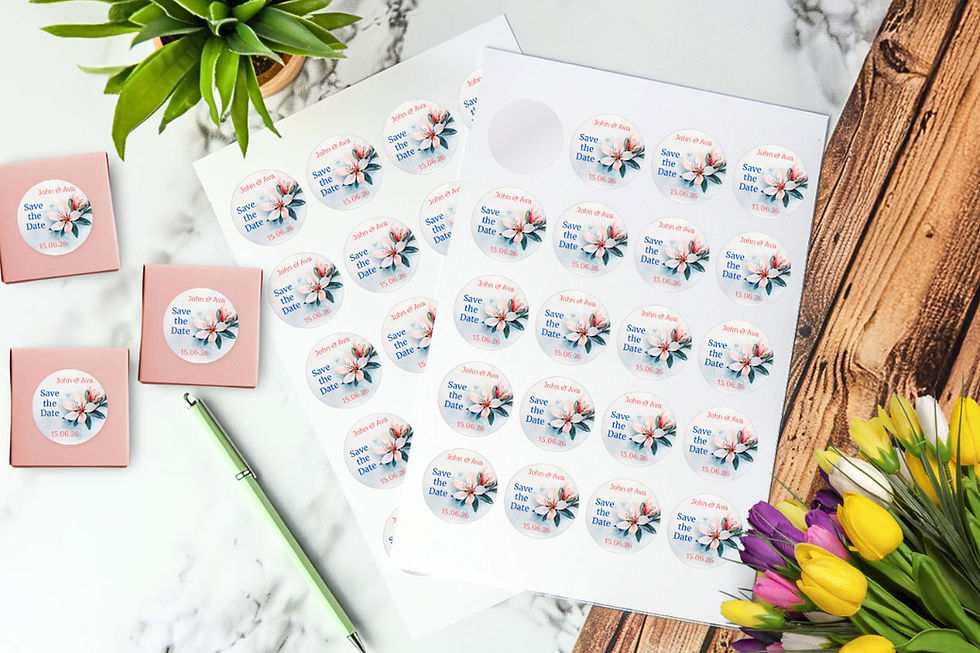Innovative Eco-Friendly Packaging for a Greener Future
- Evergreen Goods Team

- Jun 20
- 4 min read
Updated: Aug 20
In recent years, the packaging industry has undergone significant transformation. As environmental concerns mount, the demand for sustainable packaging solutions has soared. Companies and consumers alike recognise the importance of reducing waste and minimising the carbon footprint associated with packaging. This blog post delves into innovative eco-friendly packaging designs and practices that are paving the way for a greener future.
Sustainable Packaging Designs: The Growing Trend
Sustainable packaging designs mark a shift from traditional materials that often contribute to pollution and landfill issues. According to a report by Smithers Pira, the global market for sustainable packaging is estimated to grow to $500 billion by 2024. This surge is driven by consumer awareness and demand for products that respect both the environment and health.
Several types of sustainable packaging are emerging, including biodegradable materials, compostable options, and recyclable designs. For example, brands like Coca-Cola are investing in plant-based bottles made from 100% recycled materials, reducing dependency on fossil fuels.

These innovative packaging designs not only align with environmental values but also enhance brand image. Companies that adopt eco-friendly practices often experience an increase in consumer loyalty and brand trust. Eco-conscious consumers are more likely to support brands that prioritise sustainable practices, driving business success in an increasingly competitive marketplace.
The Importance of Choosing Eco-Friendly Packaging
Choosing eco-friendly packaging is crucial for several reasons. First, it reduces waste, contributing to the reduction of the global waste crisis. According to the Environmental Protection Agency (EPA), packaging materials account for 30% of total waste produced in the United States. Using sustainable alternatives can drastically reduce this figure.
Second, sustainable packaging can have a positive economic impact. Green packaging solutions are often more cost-effective over time. While the initial investment in sustainable materials may be higher, their durability and recyclability lead to lower disposal and landfill costs in the long run.
Finally, adopting eco-friendly packaging solutions can lead to significant energy savings. A study by the American Forest and Paper Association found that paper and cardboard from recycled materials uses 70% less energy to produce than virgin materials. This not only conserves resources but also helps in reducing greenhouse gas emissions.
How Do You Make Packaging Eco-Friendly?
Creating eco-friendly packaging involves a multi-step approach that addresses material selection, design, and lifecycle. Here are some strategies companies can implement:
Choose Sustainable Materials: Select packaging materials made from recycled or renewable sources. For example, bamboo and mushroom-based packaging have gained popularity due to their rapid growth and biodegradability.
Prioritise Minimalism: Reduce material usage by designing packaging that is just enough for protection and transportation. Unnecessary layers and external packaging can contribute to excess waste.
Utilise Biodegradable and Compostable Options: Look for packaging that can break down naturally within a short period after disposal. Bioplastics made from cornstarch or sugarcane are excellent alternatives to traditional plastics.
Implement Reusability: Design for reuse by creating versatile packaging suitable for multiple purposes beyond just the original product. This extends its lifecycle and reduces waste.
Educate Consumers: Provide clear instructions on how to recycle or compost your packaging. Customers appreciate guidance on how to dispose of packaging responsibly.
By adopting these strategies, brands can significantly reduce their environmental footprint and contribute to a circular economy, where materials are reused and recycled rather than discarded.

Case Studies in Eco-Friendly Packaging
Several companies have successfully implemented eco-friendly packaging solutions, setting industry standards and inspiring others to follow suit.
1. Unilever: Unilever is focused on its Sustainable Living Plan, aiming to reduce its environmental footprint while increasing its positive social impact. This includes transitioning to recyclable or compostable packaging for all its products by 2025.
2. IKEA: IKEA is committed to only using renewable or recycled materials in its products and packaging by 2030. The company has already launched a new line of packaging made from mushroom mycelium, which is fully biodegradable.
3. Dell: Dell has introduced packaging that uses 100% recycled materials, including mushroom-based foam and bamboo. This innovative approach has reduced its reliance on virgin materials and minimised waste.
These companies provide valuable examples of how effective eco-friendly packaging strategies can drive business innovation and environmental responsibility.
Taking Action for a Greener Tomorrow
As a consumer or business, there are actionable steps you can take toward supporting eco-friendly packaging practices.
Support Brands: Choose to buy from companies committed to sustainable packaging solutions. Your purchases send a message about the importance of eco-friendly practices.
Reduce, Reuse, Recycle: Always consider the three Rs. Reduce your consumption, reuse materials when possible, and recycle packaging whenever you can.
Educate Yourself and Others: Stay informed about the impact of packaging on the environment and share your knowledge within your community. Awareness is key to encouraging responsible consumer behaviors.
Advocate for Change: Join or support initiatives that promote sustainability within your local community or industry. Your voice can inspire others to seek out sustainable solutions.
In conclusion, innovative eco-friendly packaging presents an opportunity for brands and consumers to work together for a greener future. By embracing sustainable packaging designs, we can significantly minimise waste, conserve resources, and protect the environment. The momentum is growing, and with every step toward eco-friendly packaging, we get closer to a sustainable future.

%20RGB.png)



Comments